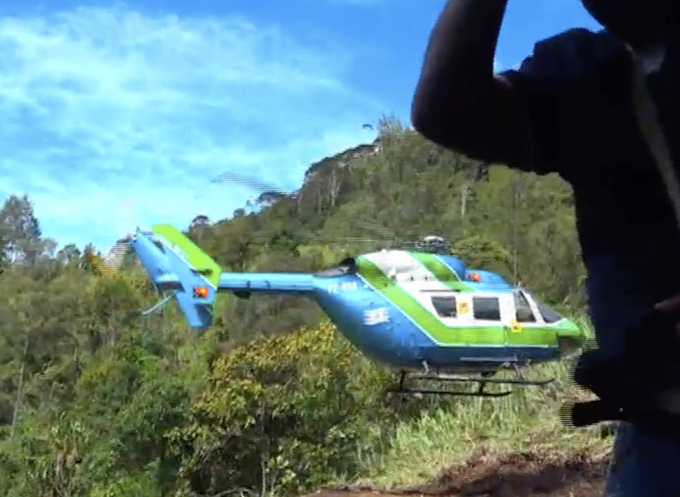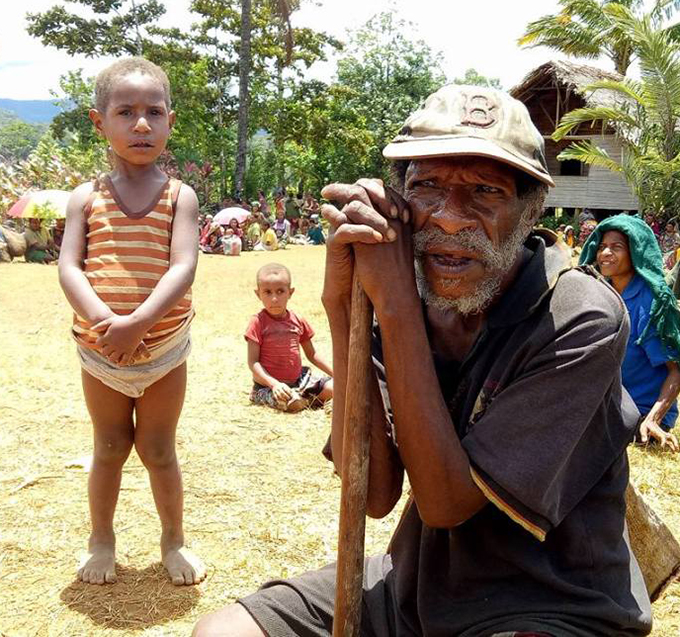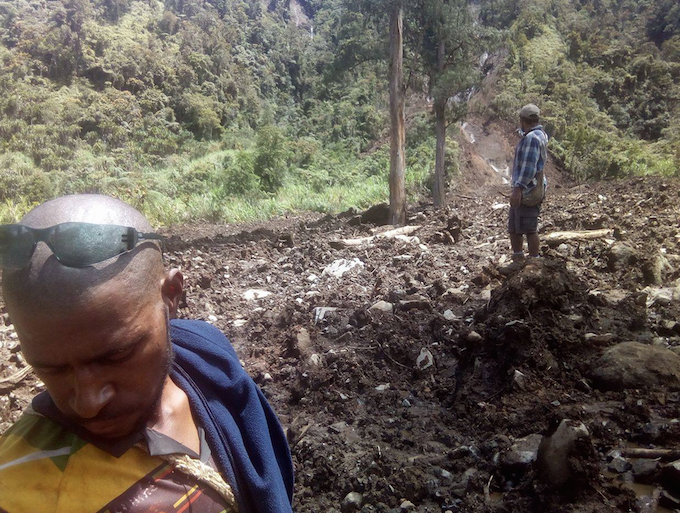
By Scott Waide, EMTV journalist and blogger
Survivors in Papua New Guinea’s earthquake in the Highlands face tough challenges. And so do the relief agencies and government authorities trying to deliver support to them.
Many of the worst affected areas in Hela and the Southern Highlands provinces are in isolated spots.
The people don’t live in large villages that you see on the coast. They live in small hamlets of 5-10 houses spread out over a plateaus or valleys.
They have no road access.
Many have to walk for hours to get within line of site of a mobile telecommunications tower in order to send a text message. Data signals are too weak and problematic.
For other locations, it takes more than a day.
Some of the villages are relatively close to the LNG site. But it looks deceptively close on a map.
Difficult to reach
What you’re dealing with on the ground are terrains that are extremely difficult to reach – even within a day’s walk. That is precisely why helicopters are vital in this disaster.
In some villages, people have had to build helipads on mountainsides to allow for medical teams to land safely.
Chopper pilot Eric Aliawi, who took an EMTV crew to one of the locations, had to land on three logs that had been placed on a spot dug out on a mountain side because the helipad had not been completed.
Even after landing, the crew and the doctors had to walk for about half an hour to get to the village.
A few commentators have said that the people affected are subsistence farmers and that they still have food to eat because they plant crops.
The reality is that their gardens have been destroyed and it is dangerous for them to go into the foothills and the valleys, or mountainsides, because of the ongoing aftershocks.
Trauma of death
They are also dealing with the trauma of the death and destruction that happened in their villages. They will have to adjust to normal life as time goes by.
Their houses have been destroyed and they have moved from the locations of their hamlets to central locations like schools, airstrips and mission stations to seek help.
Congregating in large numbers in one location is unusual for them. Losing their independence and relying on someone to give them food is also not something they are accustomed to.
They need is help to get back on their feet and resume their way of life.
They need the following:
Good quality tarpaulins for shelter – They live in a high rainfall area. The temperature drops rapidly at night and without shelter, young children and older people will get sick.
Food – With limited access to their gardens, food is a priority for them.
Water – Their water sources have been polluted. They need large water containers, tanks and clean water (as an immediate need).
Cooking pots – This is important if they are to boil drinking water.
Warm clothes + blankets – Sweaters, hoodies and simple blankets will help a lot to ease their burden. It is not as important as the others mentioned, but it will help.
Children’s clothing – also not an immediate priority but it will help a lot.
6 to 15cm nails and tools – in order to rebuild their houses, they need nails and tools like bush knives, axes and hammers. It is very difficult to obtain items like this where they are.
Disposable delivery trays, disposable suture trays – during the earthquake, sterilisation equipment at the Tari Hospital was damaged. The doctors need this to send to aid posts so that health workers can handle deliveries and other treatment.
The government contacts are:
Thomas Eluh – PA for Southern Highlands
Joseph Bando – PA Hela Province
Dr Tana Kiak – Tari Hospital
Inbox Scott Waide on Facebook for contact details, or text him on +675 70300459. Or email scott.waide@gmail.com for information. This article was first posted on Scott Waide’s blog, My Land, My Country.














































